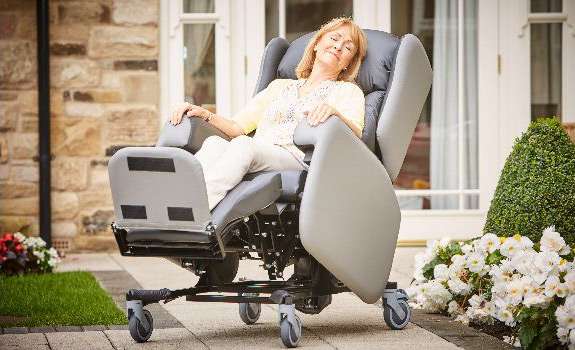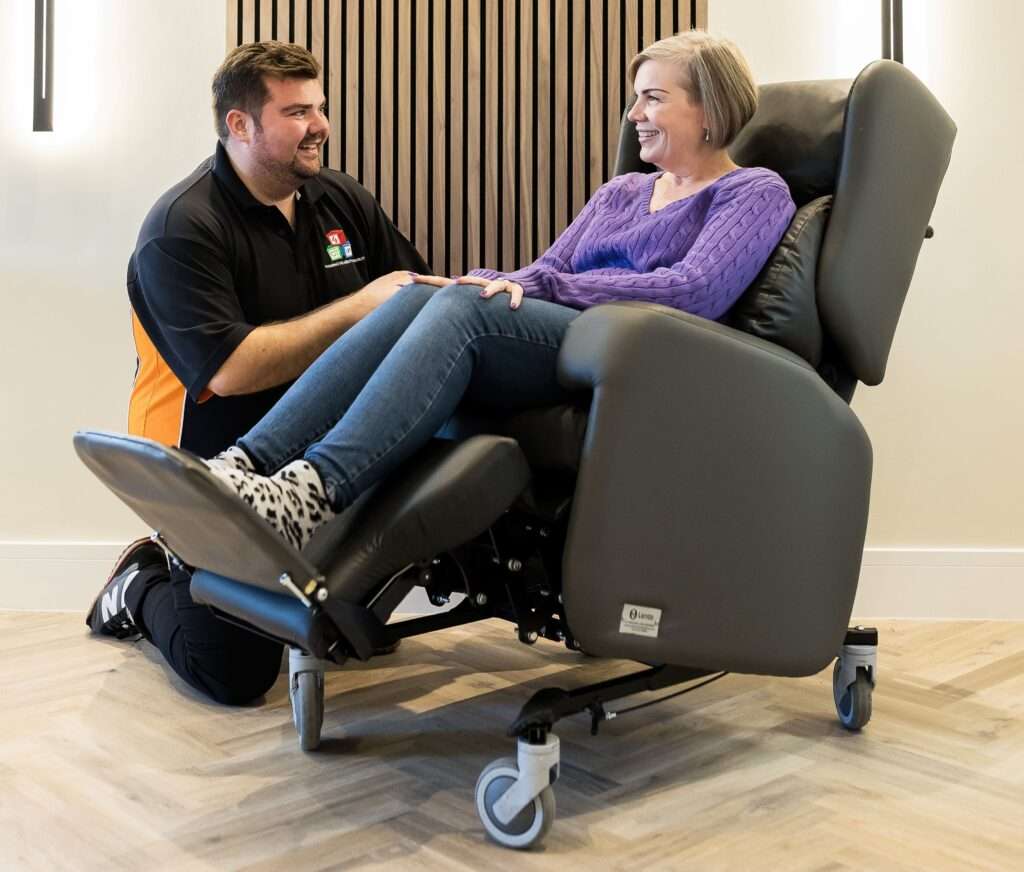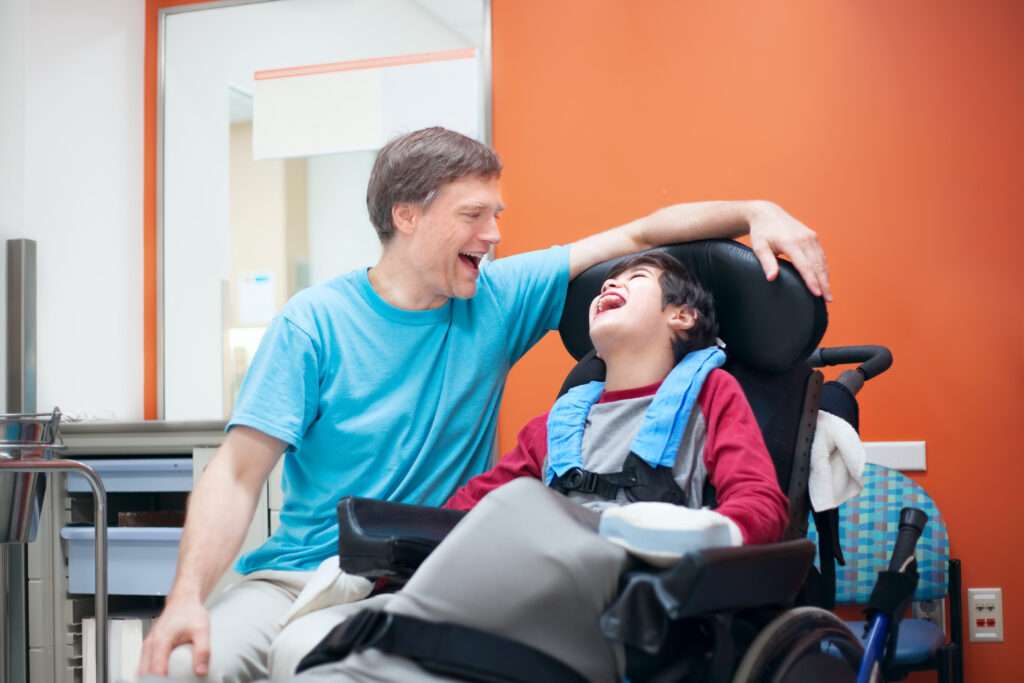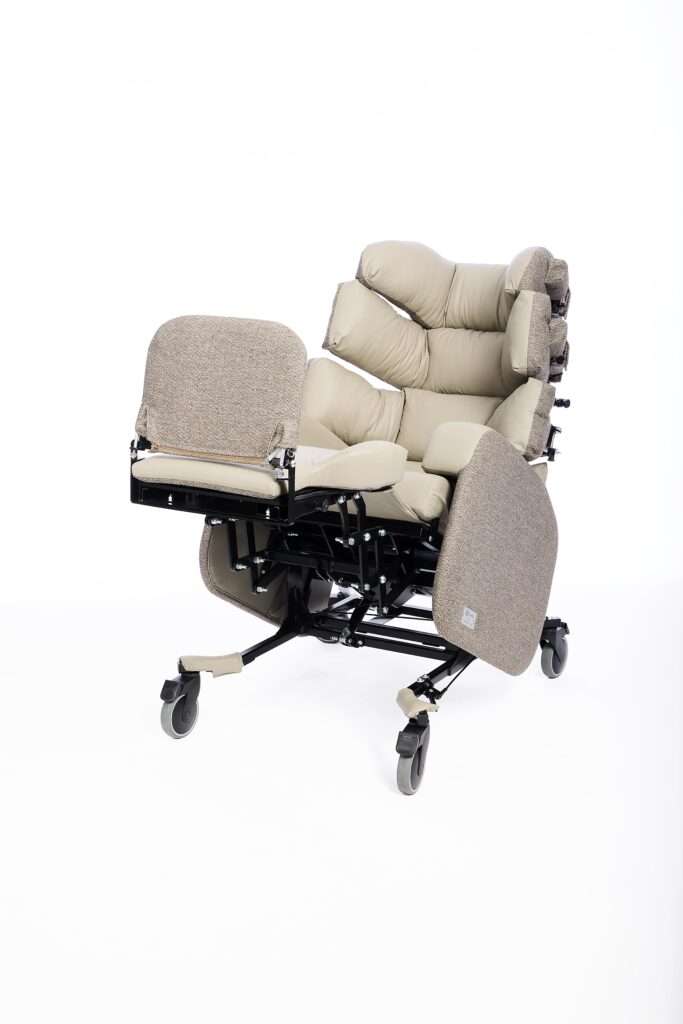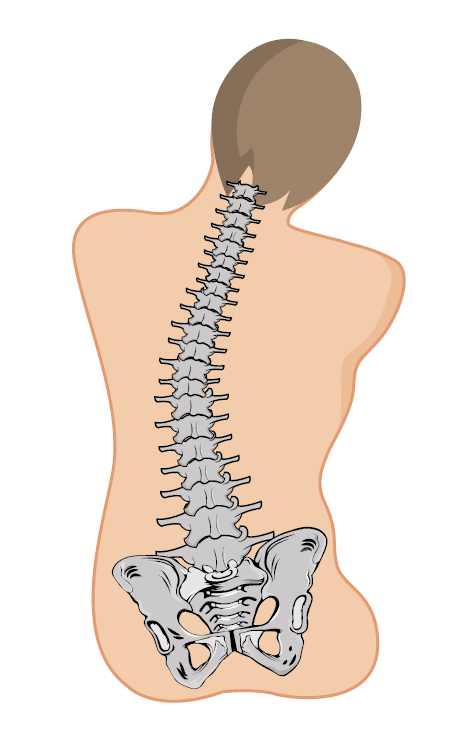Care chairs are a bit more advanced than a traditional rise and recline chair because they offer more support for people with greater needs.
For people who need care chairs, they can truly make all the difference. But what is a care chair, and how do you know when someone needs one?
When would someone need a care chair?
Deciding whether someone needs a care chair rather than a riser recliner is the first thing you need to work out. So where do you draw the line between the two?
Generally, there’s one question we always ask that helps us determine whether a client needs a rise and recline or a care chair:
Does the person need hoisting for transfers?
If your client is still able to carry out standing transfers, then they most likely don’t need the level of support provided by a care chair. In this case, you should probably be looking more towards riser recliners and high seat chairs.
But if the client is hoisted, then a care chair is the best option. This is because it offers better support for transfers and is much easier to hoist to and from.
A client would need a care chair if they need extra support and more postural management.
For someone who can sometimes carry out standing transfers and then again sometimes cannot do it, you need to work out which sort of chair will meet their needs for the majority of the time.
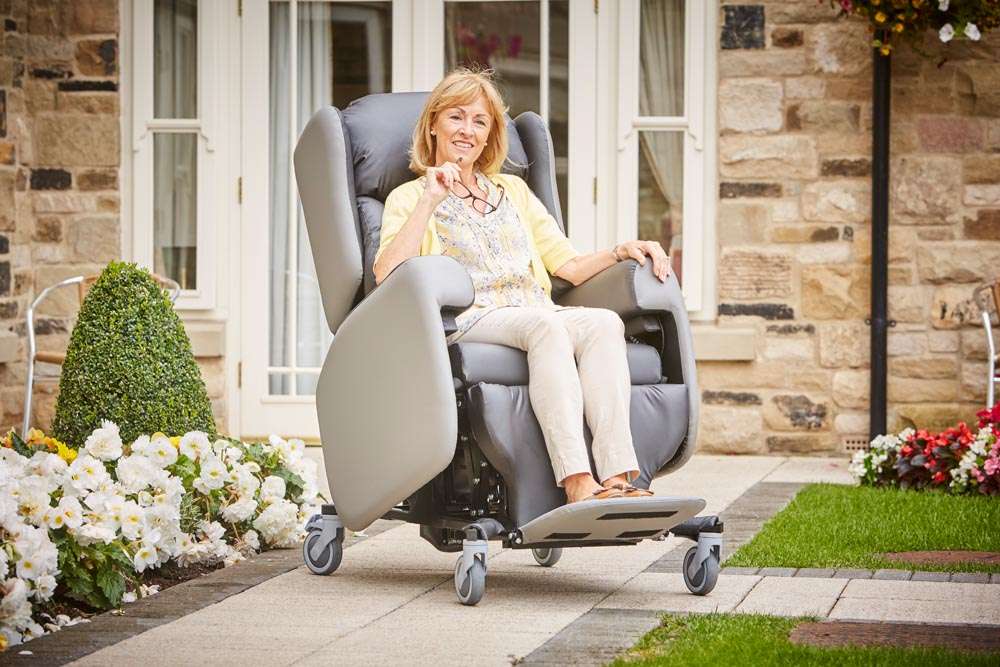
If someone needs hoisting, then their needs are probably better suited to a care chair rather than a riser recliner.
How are care chairs different?
Care chairs are often a bit more flexible than other types of specialist seating. This is so you can alter the chair over time to meet your client’s needs.
One thing that tends to be more flexible is the care chair seat size. Whilst some chairs come in a range of sizes, other care chairs are available that feature adjustable seat width, height, and depth that means you can change the care chair to suit your client’s needs over a longer period of time.
You might also find that clients who require care chairs will spend a lot more time sitting down. Therefore care chairs should include pressure relief measures like gel and air cushions that will reduce the chances of pressure injuries.
Typically, care chairs will include different positioning options like tilt-in-space, back angle recline, and legrest elevation. Again this will help combat pressure injuries and will help to keep your client comfortable and supported.
Like a riser recliner, care chairs can come with different backrests to suit the client’s comfort and needs. For clients who require care chairs, we find that lateral backrests are most popular as it helps them maintain a healthy midline posture.
Your client might also need additional supports like a larger headrest, a pommel seat, or a lap belt which can all be included in a care chair.
Summary
Care chairs are better suited to people who struggle to carry out standing transfers and they offer more specialist support in terms of posture and positioning. They’re more advanced than a typical rise and recline chair and they tend to be more adjustable to suit your client’s needs over time.





